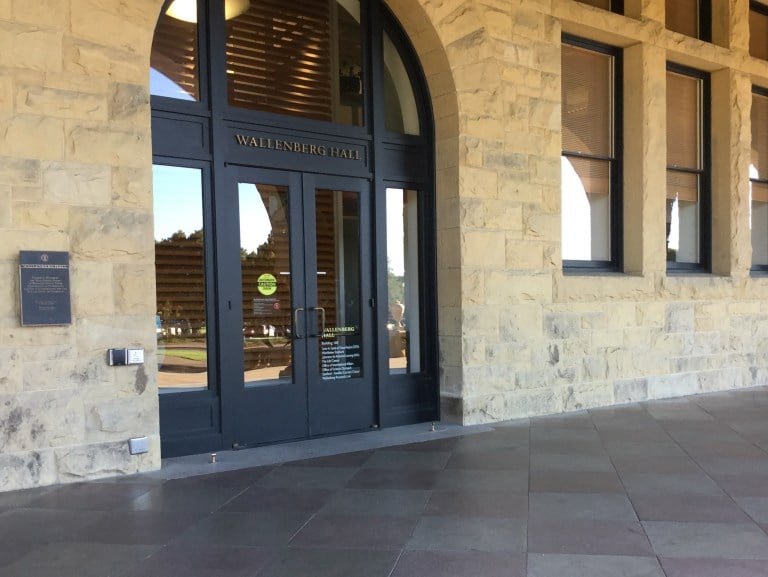This summer at the Center for Spatial and Textual Analysis (CESTA), students and faculty collaborate to digitize archives from various locations around the world.
CESTA, a research hub and pioneer of digital humanities work, aims to use digital tools and computing to answer questions in history, literature and the arts.
Spokesperson Nina Randolph ’20 emphasized the Center’s interdisciplinary. CESTA, Randolph wrote in a statement to The Daily, “provides students with the ability to explore technology in the pursuit of answers to questions about the human endeavor.”
In an era of strict division between the humanities and technology, according to Randolph, the center coalesces both academic spheres. CESTA funds research opportunities for students, who work with scholars using technology to answer humanistic inquiries.
“CESTA combats the challenges of the disciplinary divide by serving as a physical and intellectual center for collaboration that bridges technology and the humanities,” Randolph said.
Zephyr Frank, a history and urban studies professor who was the founding director of CESTA in 2011, teamed up with undergraduate research assistants to research urbanization and its discontents in 30 cities around the world in a project titled “Urbanization and Its Discontents: Poverty, Property, and the City.” The National Science Foundation, through a partnership with researchers from Southern Methodist University and Princeton, continues to fund this long-term project, which seeks to identify the causes of vulnerability and the way it materializes in different societies.
The four foundational pillars of the project’s overarching theme — vulnerability — center around the environment, institutions, the society and economy, and demography. Investigating the systems and laws of the cities provides insight into the causes that have caused those inhabitants to be dislocated or evicted from their homes.
Frank and his colleagues chose cities that “fit the Goldilocks condition in wealth and size,” Frank said, meaning, cities that are not too old, young, rich or poor. Older cities are characterized by stagnant economies, while younger cities are characterized by economic growth and a culture that supports innovation.
“Brazil exemplifies successful city planning and is more well-documented than others,” Frank said.
This gives the researchers access to available documents that provide insight to past and present conditions in Brazil. Studying Brazil on a spatial and temporal level streamlines the team’s approach to identify ways to measure dislocation and eviction in different sectors of a population, for example, the youth versus the seniors.
Lucas Sato, a rising sophomore and a Computer Science major and a research assistant for the project, enjoys decoding the complexity of dense historical documents at CESTA.
“Being a CS major … you’re surrounded by people who think … there is nothing that can’t be solved,” Sato said. “But CESTA is the perfect place to explore the messiness [of data]. You can try to make humanities more technically equipped and firmly defined, or you can try to make your computation more messy.”
Another project at CESTA, The Forma Urbis Romae Project, conducted by University of Oregon Professor of Architecture Jim Tice, aims to digitize Italian archaeologist Rodolfo Lanciani’s topographical map of ancient Rome. This map reveals the relationship between ancient and modern urban life in Rome.
Vincent Nicandro ’20, a research assistant for this project, transcribes physical Roman documents to digital PDFs.
“Not only should we be documenting these sites and bringing back what we found, but we should also make sure that there’s some visual evidence of the work we’ve been doing and then using those photographs to get a better picture of what the ancient world was like,” Nicandro said.
According to Nicandro, historic sites like Pompeii and Ostia are vulnerable to natural and terrorist threat, so preserving remains is critical to learn about urban fabric of ancient Roman society. Students like Nicandro focus on creating a digital exhibit where all of this information can be stored and used in future projects, both in and out of Stanford.
The projects conducted at CESTA work to fight the stigma that the humanists and scientists do not work together.
“People might not be hyped about [CESTA] because the projects surround really hard humanistic questions. But this is a space where students from all disciplines should begin to answer these questions,” said Emily Wilder ’20, an undergraduate research assistant working with Frank this summer. “As CESTA grows, Digital Humanities grows, and vice versa. It’s a mutual relationship that will continue to grow because it is necessary.”
Frank is confident that the knowledge gained through collaborative research will build off of itself in upcoming years.
“For 18 years, my experience with Stanford students is that they are curious and want to be challenged,” Frank said. “There is a big common middle ground — it’s big enough. Ultimately, we see [CESTA] as an opportunity where you could come work and collaborate, use resources, and be a part of something that is actually productive.”
“The faculty projects, student programs, and academic expertise create meaningful connections resulting in successful and innovative scholarship that changes our understanding of the world,” Randolph said.
Correction: A previous version of this article misspelled Lucas Sato’s name, and incorrectly stated that he is a rising junior; he is in fact a rising sophomore. The Daily regrets these errors.
This article has been updated with comment from Nina Randolph ’20, a spokesperson from CESTA.
Contact Yusra Arub at yusraarub19 ‘at’ mittymonarch.com
